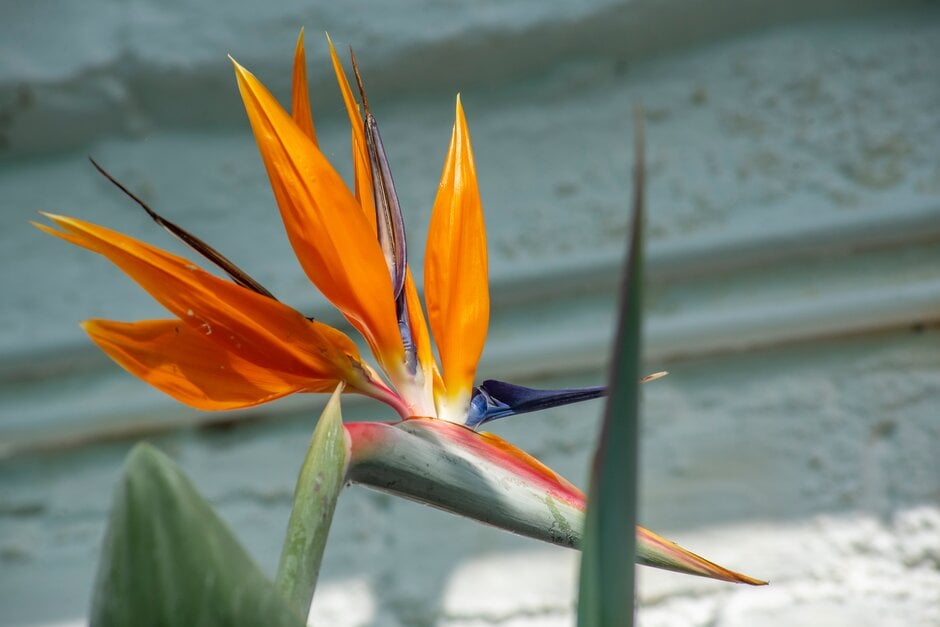Strelitzia
bird of paradise
Strelitzia are tender, clump-forming evergreen perennials, forming a clump of long-stalked, linear to broadly oblong grey-green leaves. Stiff stems bear beak-like bracts from which strikingly coloured orange and blue flowers open in succession from late winter to spring. It may take a few years for plants to bloom. S. reginae, which are more commonly found within the UK, may produce flowers if given sufficient light but other varieties such as S. nicolai or S. augusta are grown primarily for their lush foliage. An ideal plant to give a tropical feel to your home or conservatory

Buy this plant
Size
Ultimate height
1.5–2.5 metresTime to ultimate height
10–20 yearsUltimate spread
1.5–2.5 metresGrowing conditions
Moisture
Moist but well–drained, Well–drainedpH
Acid, Alkaline, NeutralColour & scent
| Stem | Flower | Foliage | Fruit | |
| Spring | Orange Blue | Grey Silver Green | ||
|---|---|---|---|---|
| Summer | Grey Silver Green | |||
| Autumn | Grey Silver Green | |||
| Winter | Orange Blue | Grey Silver Green |
Position
- Full sun
- Partial shade
Aspect
East–facing or South–facing or West–facing
Exposure
Sheltered Hardiness
H1BBotanical details
- Family
- Strelitziaceae
- Native to GB / Ireland
- No
- Foliage
- Evergreen
- Habit
- Clump forming
- Genus
Strelitzia are evergreen perennials, forming a clump of long-stalked, linear to broadly oblong leaves, with stiff stems bearing beak-like bracts from which strikingly coloured flowers open in succession
- Name status
Correct
How to grow
Cultivation
Under glass grow in peat-free, loam-based compost, in a large container, in full light with shade from hot sun. During growth, water freely and apply a balanced liquid fertiliser monthly. Top dress annually and repot every second year. Water sparingly in winter and ventilate when temperatures exceed 20°C. Plants may take a few years to bloom and will only do so if given adequate levels of light and feed. They will generally flower better if slightly pot-bound. See Strelitzia cultivation
Propagation
Suggested planting locations and garden types
- City and courtyard gardens
- Cottage and informal garden
- Houseplants
- Mediterranean climate plants
- Patio and container plants
- Sub-tropical
- Conservatory and greenhouse
- Cut flowers
- Wall side borders
Pruning
No pruning required
Pests
May be susceptible to scale insects, glasshouse red spider mite and mealybugs
Diseases
Generally disease-free
Love gardening
Sign up to receive regular gardening tips, inspiration, offers and more
View our Privacy Policy
Get involved
The Royal Horticultural Society is the UK’s leading gardening charity. We aim to enrich everyone’s life through plants, and make the UK a greener and more beautiful place.